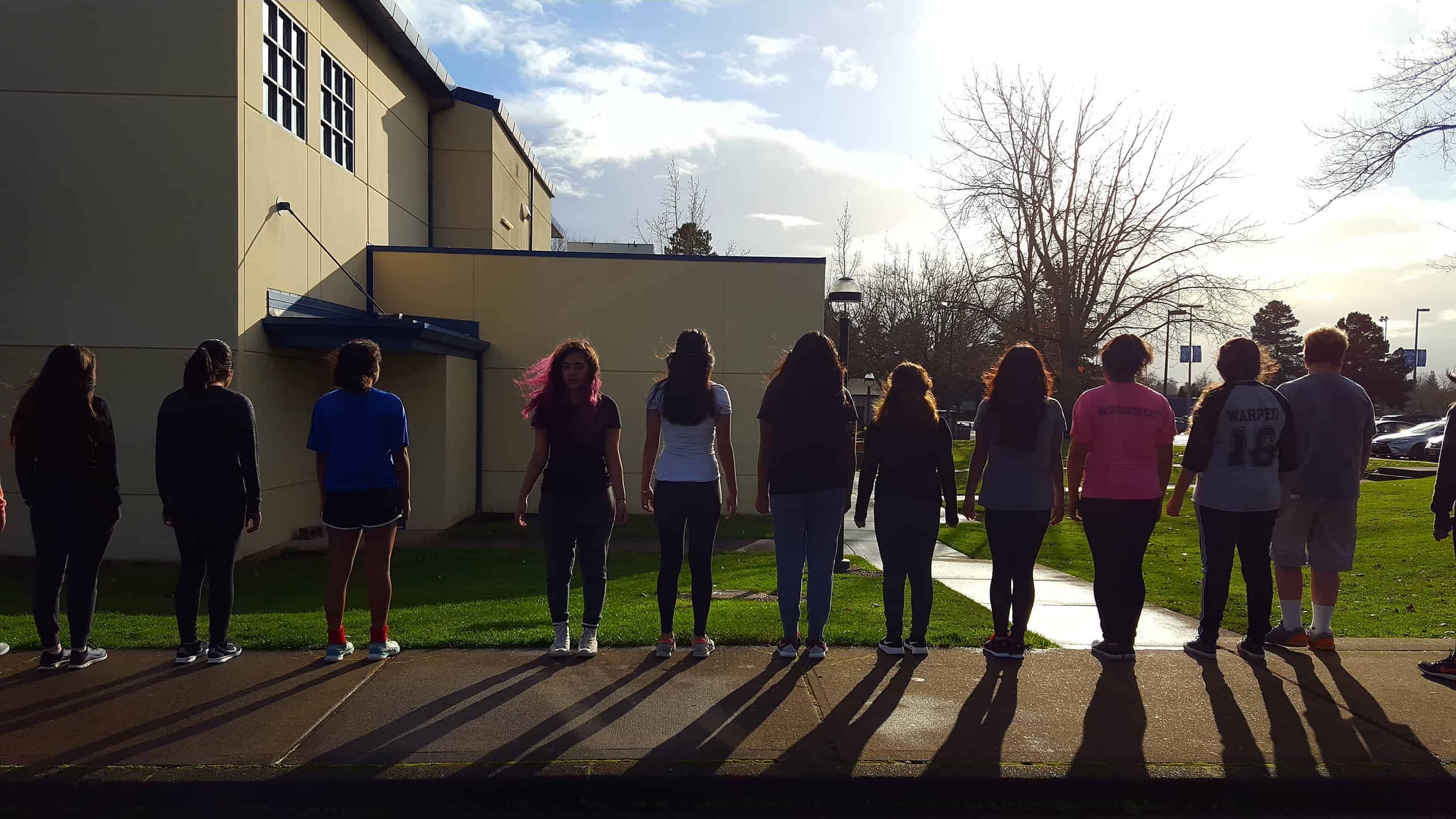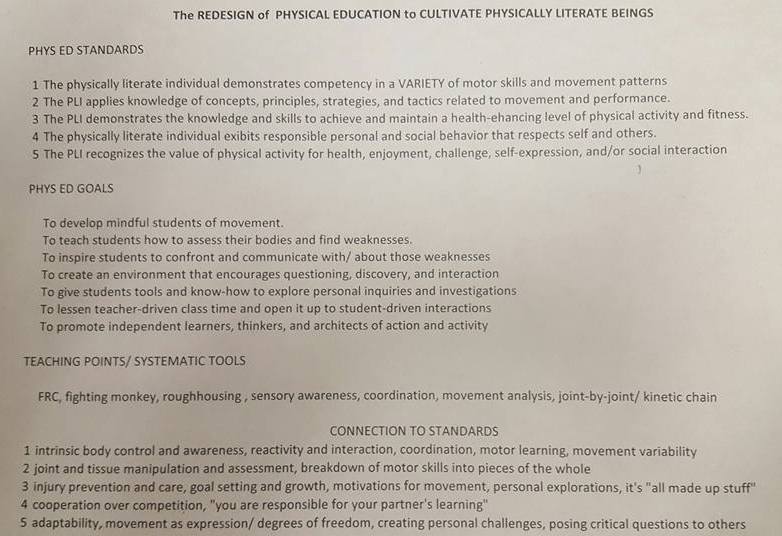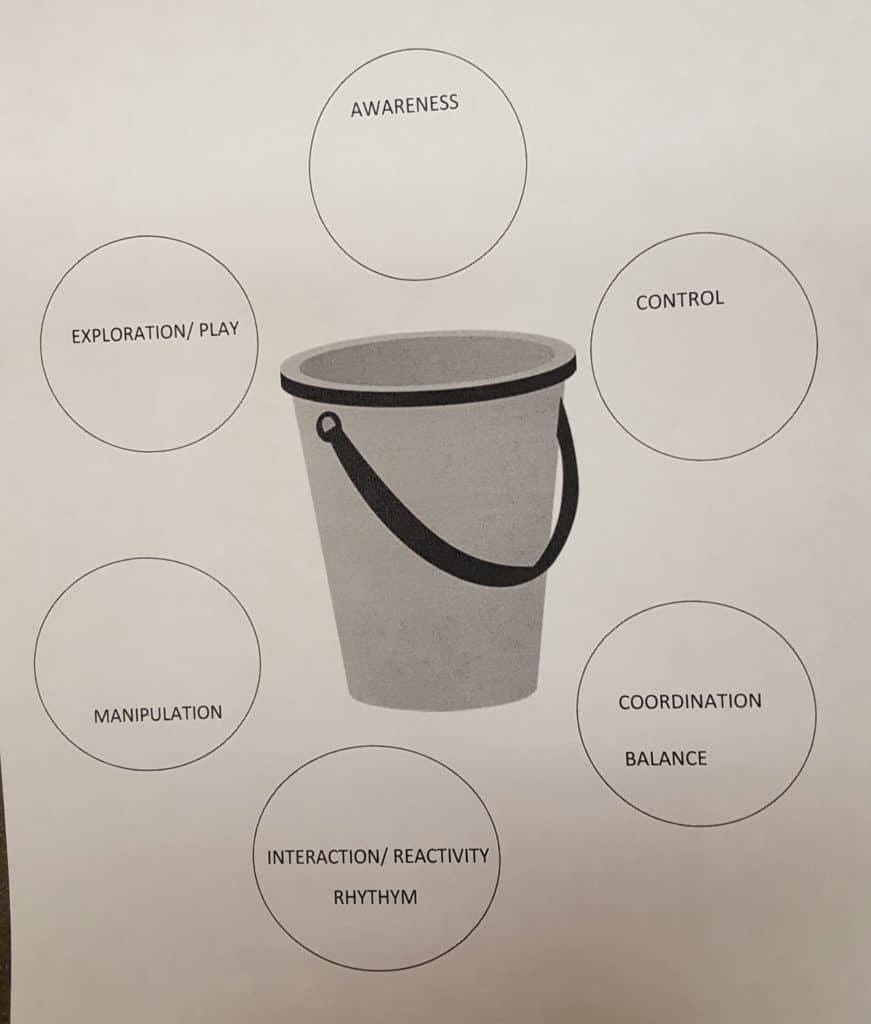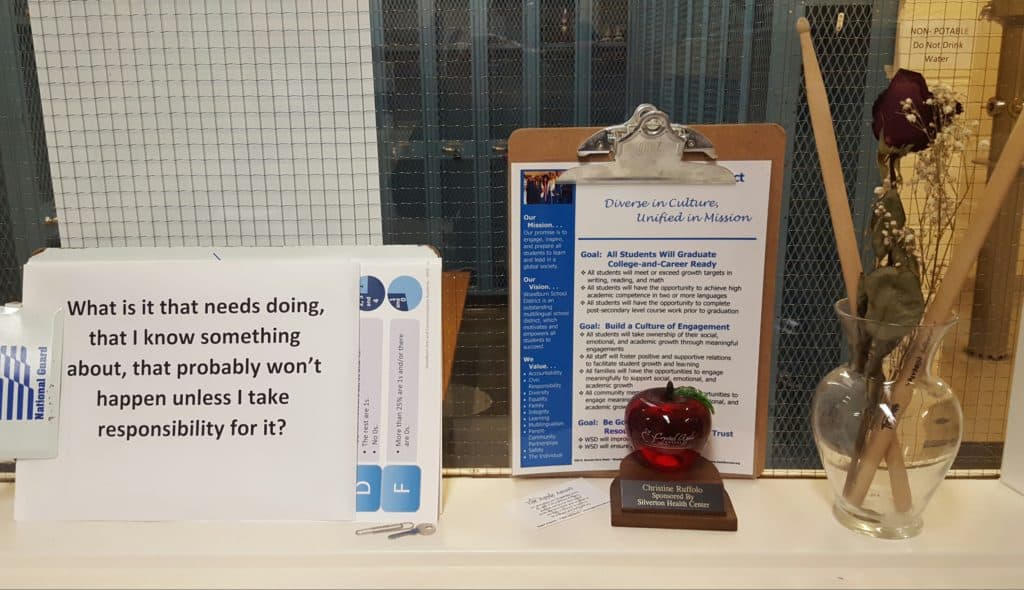
Changing the Culture of Physical Education
I’ve been teaching PE for thirteen years. When I entered, I did what those around me were doing. I had been an athlete. I had great fun and success through sport, and I wanted to share this experience with the next generation. But I soon came to realize there were great gaps in my physical education. I was not prepared for was life outside of sport, nor how to use my body as a tool unto itself. It made me a terrific workhorse, but I didn’t know what to do unless I was told. Sure I could shoot hoops for hours, but the focus was the game, not me. When the weights took over, it somehow seemed even less me.
I realized I was funneled through as system that acted as no other options existed. If the choice was between playing sports or not playing sports, and if your grade was dependent on how willingly you played that sport, the easiest answer is to simply participate. We forget that the construct of space and facilities and equipment and teammates are things not regularly found in the outside world.
Instead of generating an active public, we’re breeding a compliant one.
What would they choose to do and become if they were convinced they could do anything?
What would they say if you asked?
As I pondered these questions in their context of my given environment, I received news that my environment was about to drastically change. I was told that I would be taken out of my small school and inserted into a larger campus three times as large. I immediately feared that contemplative PE I’d been developing would be crowded out by the ultra-competitive, sport-loving masses. I wanted no part in making monsters, and had no interest in funneling young people through the athletic machine. I aspired to cultivate thinkers.
Thoughtful beings can take the information they’re given and make their own decisions. They can adjust, adapt, and create. Instead of using your energies to force them to participate in something they didn’t like, you could re-channel it into empowering them to develop something they did. The role of teacher is best served presenting options and asking questions. Exposure is everything. Giving them choice also grants them the gift of ownership.
I cherished these same freedoms myself. It’s why I loved that nobody bothered to pay attention to what we were doing. I could experiment with different ideas and systems and formats, and the only people I had to answer to were the kids. Now I worried I would be ordered to fall in line and do the same thing as the rest of the department. The outlier would have to bend a knee to tradition.
Fortunately, the two gentlemen I would be working with held an open mind. They were supportive of an alternative for non-athletes and recognized the need for such a program. With the trio, each of us could do what we specialized in and have the incoming students self-select into sections of interest. One led team sports, the other strength and conditioning, and I could keep my beloved ‘other’. The green light given, I hustled back to my office and seized upon the opportunity.
I looked up the most recent national standards and was surprised to see that sport wasn’t mentioned. Another divine sign. Instead of using snippets of movement work as warmups (snuck in as one would vegetables), I could create a class that was entirely based on principles of the emerging movement culture, (which, coincidentally enough, looked a whole lot like earlier physical education). I was going to devise a program in which every child was taught the value and importance of physical literacy. They were going to leave here knowing how to move their bodies.
The following document was penned in the early hours of that first work day: 
Once I had my defining document, I needed a guiding visual for quick reference. I set out to characterize the qualities of the physically literate. I came up with six categories, used in various doses and degrees, to design daily, weekly, and unit-long lessons: 
The process is a circular, spiraling one, similar to the cycle of inquiry.
The semester was broken into three, six-week cycles. Though I had a general idea of where I wanted the class to go, I only planned out a week in advance. I never knew what might resonate with them until it was revealed. I catered to their needs and interests and pacing. I let them lead me.
This was our class, not mine.
Cycle one revolved around awareness and control. We did blindfolded activities and commanded mindless robots. We assessed and prepared joints and tissue. Conditioned our functional range. Tested and retested. Created and played movement games. Discussed pain and how to get out of it. We practiced stillness and relaxation.
Cycle two focused on balance, coordination, and control. They built and navigated obstacle courses. Synchronized movements and ball slams. Matched hand and foot movements to eye charts. We carried heavy things and experimented with how load and position changed. We threw things and learned to stop and change direction, then used these skills in new sports we made up.
Cycle three was heavy on interaction. We started with the ground — tumbling and handstands. Branched into acroyoga. We wrested and roughhoused and simulated attacks and self-defense. Reacted to sight and sound. Absorbed force and avoided balls on string. The last five days were reserved for independent work and improving on personal goals.
This was the moment of truth. When given the time and the resources to do anything they wanted, what would they choose to do?
I was floored by how much they remembered and engaged in. They worked on body parts. Requested certain pieces of equipment. Recreated drills. Made up workouts. Played. Asked questions. Most worked in pairs or small groups; others opted to work alone. At the end each could justify whether or not they had improved. The vast majority stated they would continue working toward their goals now that PE has ended.
Physical education can a powerful tool of self-actualization.
We simply have to treat it that way.
Pleased as I was by the results, there is still a lot of improvements to be made. I need to find a better balance between instruction and exploration throughout the full eighteen weeks. I need to find ways to introduce even more options. I need to be able to better explain what it is we do to drum up more interest and educate those who only know us as “the sleeping class” or “the one where they just sit and stretch”. The to-do list seems infinite, but it doubles as a checklist in making things better.
As much as Physical Education is belittled, it has, by far, the largest reach and influence on our young people. It is a vital springboard towards framing the physical goals and ambitions of the next generation. The very least we can do is offer them multiple lenses on what movement is and how improvement is both accomplished and defined. Expecting critical thinking skills comes with the responsibility of teaching them. As models and examples, it starts with an idea, and being bold enough to try.





Love this!! I am an elementary wellness teacher and my mission is simple-inspire children to find confidence and FUN in movement in order to live fit, healthy lifestyles for life!
Yes. They will continue to do things they enjoy, and if we can keep them curious, they will continue to seek out continued movement opportunities all on their own.